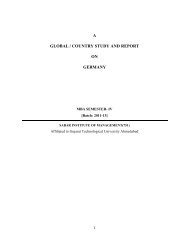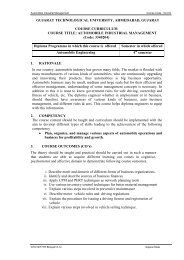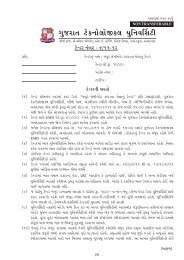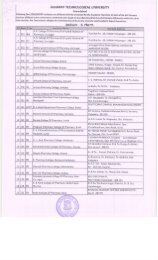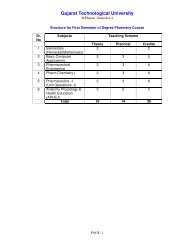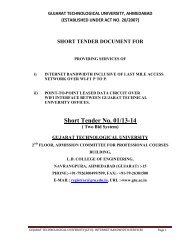778-Som-Lalit Institute Of Business Management - Gujarat ...
778-Som-Lalit Institute Of Business Management - Gujarat ...
778-Som-Lalit Institute Of Business Management - Gujarat ...
You also want an ePaper? Increase the reach of your titles
YUMPU automatically turns print PDFs into web optimized ePapers that Google loves.
Energy Profile Qatar<br />
Before the emergence of petrol-based industry, Qatar was just a pearl fishing<br />
country. The exploitation and production of oil and gas fields began in 1940. In 1973,<br />
oil and gas production and exploitation revenues increased drastically, taking the<br />
state out of the ranks of the world's poorest countries and offering it with one of the<br />
highest per capita incomes in the world.<br />
The State of Qatar has the world's highest per capita production and proven<br />
reserves of both natural gas and oil. In the year 2010, Qatar had the world's largest<br />
GDP per capita, while the economy rose by 19.40%, the fastest in the world.<br />
Oil production will not remain long at apex levels of 500,000 barrels per day, as oil<br />
fields are calculated to be mostly depleted by 2023. However, large natural gas<br />
reserves have been located off Qatar's northeast coast. Qatar's reserves of gas are<br />
the third-largest in the world, exceeding 250 trillion cubic feet.<br />
Qatar's heavy industrial plans, all based in Umm Said, include a refinery with a<br />
50,000 barrels per day capacity and there are also some other projects like a<br />
fertilizer project for urea and ammonia, a steel project, and a petrochemical project.<br />
All these industries are depended on gas fuel. Most are joint ventures between<br />
European and Japanese firms and the state-owned Qatar General Petroleum<br />
Corporation (QGPC). The U.S. is the biggest equipment supplier for Qatar's oil and<br />
gas industry, and U.S. companies are playing a vital role in North Field gas<br />
development.<br />
QATAR POWER REPORT – 2012 – Q4<br />
The Qatari government is planning to spend more than $5bn by end-2013 to<br />
increase its electricity and potable water production capacity, according to Qatar<br />
Electricity & Water Company CEO Abdulsattar al-Rasheed. $2.4bn will be invested<br />
by 2012, while $2.8bn will be spent in 2013. New projects include a 2,250 megawatt<br />
(MW) power plant. During the period 2012-2021, Qatar‘s overall power generation is<br />
expected to increase by an annual average of 6.7%, reaching 46.6 terrawatt hours<br />
(TWh). Driving this growth is an annual 6.0% gain in generation of gas-fired, which<br />
remains the key form of power supply in the country.<br />
Qatar's Energy Leader<br />
"The State of Qatar is very important global energy hub and the Doha Energy Forum<br />
provides an excellent opportunity for industry representatives to discuss changes<br />
33 | P a g e



